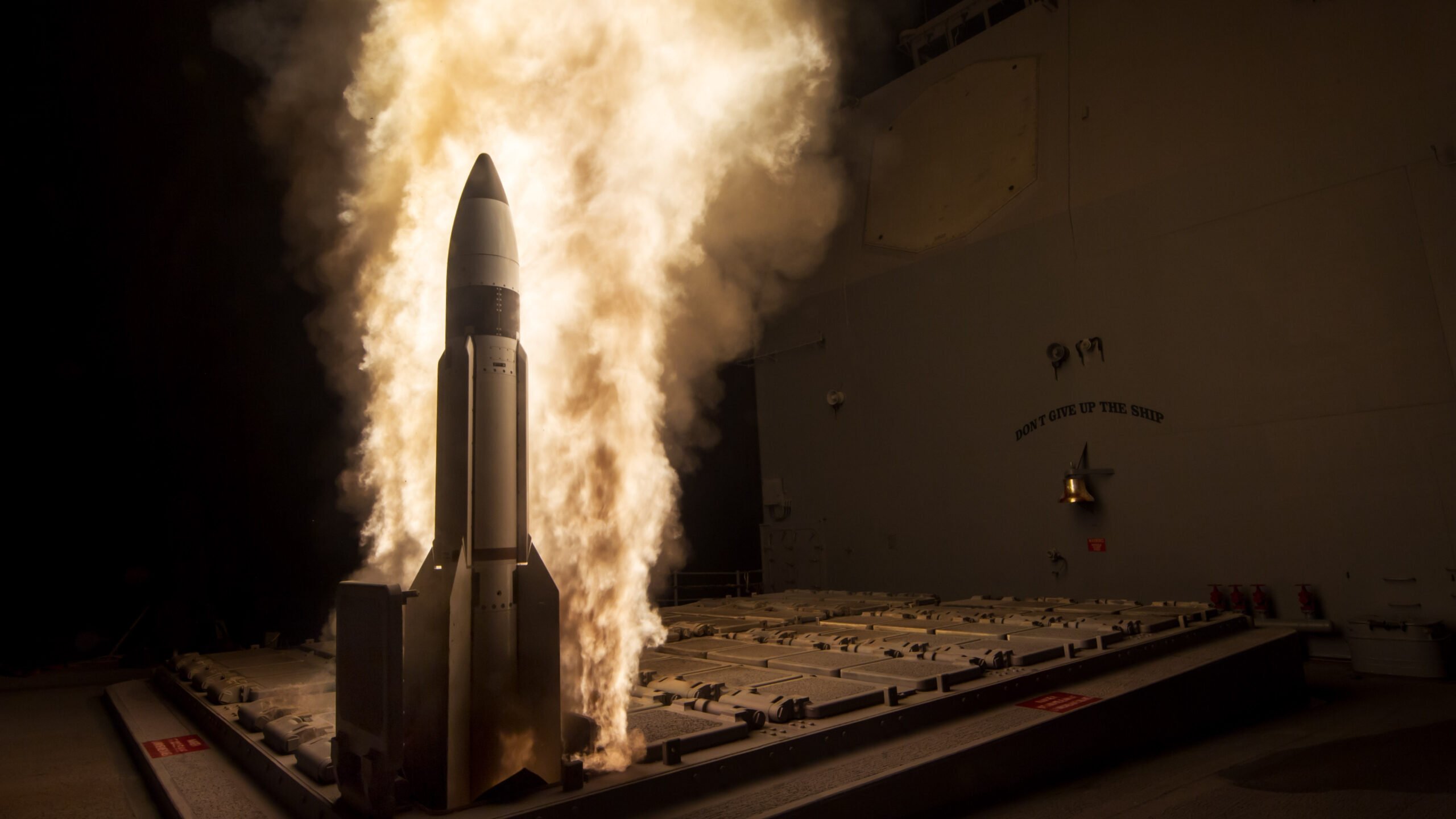THERESA HITCHENS

By bringing the three mission areas of missile warning, missile defense and space domain awareness under one command as the Global Sensor Manager, USSPACECOM can more effectively integrate and fuse the sensor data for rapid detection, characterization, tracking and dissemination to ensure theaters can defeat any threat,” said Gen. Jim Dickinson,
Standard Missile-3 (SM-3) Block 1B guided missile is launched from the USS Lake Erie and successfully intercepted a medium-range ballistic missile target off the coast of Kauai, Hawaii, during a Missile Defense Agency and US Navy test. (Missile Defense Agency)
WASHINGTON — US Space Command today announced that it will take over responsibility for missile defense operations from US Strategic Command, as a result of President Joe Biden’s approval of an update to the Unified Command Plan (UCP) that delineates military command roles.
“This transfer is the culmination of a comprehensive study on the roles, responsibilities and authorities associated with the Missile Defense enterprise and represents an alignment to the 2022 Missile Defense Review,” said Army Gen. James Dickinson, SPACECOM commander.
“Integration of systems and fighting doctrine is critical to modern warfare. By bringing the three mission areas of missile warning, missile defense and space domain awareness under one command as the Global Sensor Manager, USSPACECOM can more effectively integrate and fuse the sensor data for rapid detection, characterization, tracking and dissemination to ensure theaters can defeat any threat,” he said.
STRATCOM has been responsible for missile defense at least since 2002, when the first version of SPACECOM was folded into it by then-Defense Secretary Donald Rumsfeld. Under that arrangement, for example, in February 2008 the command undertook Operation Burnt Frost, shooting down a non-functioning US spy satellite using a modified Standard Missile-3 (SM-3) missile defense interceptor launched from the Navy’s USS Lake Erie.
Biden signed off on the 2022 UCP including the transfer of authority on April 25. The UCP is generally updated every two years or so, but also whenever a new command is formed or a standing one given new jobs. As Breaking Defense was first to report, Chairman of the Joint Chiefs of Staff Gen. Mark Milley in 2020 launched an update to reflect the 2019 recreation of SPACECOM, which subsequently was signed off by Biden in June 2021.
SPACECOM will take on the missile defense mission — ranging from planning and analysis to network management to training. It also will take over STRATCOM’s missile defense component, the Joint Functional Component Command for Integrated Missile Defense.
However, STRATCOM and the North American Aerospace Defense Command will keep responsibility for “Integrated Threat Warning and Attack Assessment missions,” the press release says.
“In the increasingly complex global threat environment, missile defense is critical to defending the homeland,” said Air Force Gen. Anthony Cotton, STRATCOM commander, said in the press release. “I am confident that this UCP better supports our integrated deterrence framework in safeguarding our nation.”
No comments:
Post a Comment